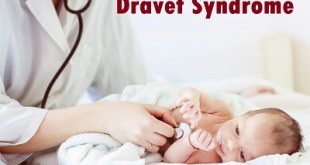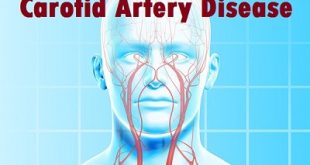What is cervicalgia?
Cervicalgia is a term used to describe pain or significant discomfort in your neck, especially at the back and/or sides. Lumbago is a similar term to cervicalgia except that it refers to pain in the low back.
Basically, cervicalgia is neck pain, or pain that occurs in the cervical spine. The cervical spine is defined as the area extending from the first spinal vertebra through the seventh. The first bone of your spine is located at about the level of your ears, and the seventh is located at the base of the neck.
The first seven spinal bones are the ones that make up the neck. This means that the bone below the seventh cervical vertebra, is not the eighth, as one might expect, but rather the first thoracic vertebra. It is attached to the first rib and is associated with the thoracic spine, which corresponds to the upper and mid-back areas.
Classification and Types of Neck Pain or Cervicalgia
Acute Neck Pain or Cervicalgia:
This is severe pain in the neck with stabbing, shooting pain referred into the shoulders and arms. Patients having the following symptoms should seek medical attention immediately: Progressive neurological deficit such as weakness in the arms or loss of feeling and coordination in the arms or legs may indicate nerve damage. Persistent or increasing pain accompanied by lack of appetite, unplanned weight loss, nausea and vomiting with fever/chills/shakes could be an indication of spinal tumor or infection.
Chronic Neck Pain or Cervicalgia:
Chronic neck pain is prolonged pain present for a long duration of time. It is accompanied by pain that radiates down the arms, and into the hands and fingers. Cervical herniated disc or foraminal stenosis pinching a nerve in the neck is the common cause. Treatment for cervical disc herniation depends on the duration of the pain, intensity of the pain and the extent to which the cervical nerve and/or spinal cord are affected. Usually, the symptoms are temporary and can be treated successfully with nonsurgical care such as medication, physical therapy, manipulations etc. If the pain persists beyond 6 to 12 weeks despite conservative treatments, then surgery is recommended.
Pathophysiology
Several structures are responsible for causing neck pain such as bones, nerves, discs, longitudinal ligaments, muscles, facet joints, and dura. All these structures cause pain when they are irritated or inflamed. The pain can be classified as nociceptive, neuropathic, or idiopathic in origin. Nociceptive pain is the most common type of pain. Acute pain is often of nociceptive origin, but when it becomes a chronic pain then the influence of psychologic and social factors becomes more apparent. The activation of peripheral primary afferent, gives rise to nociceptive sensation of pain. Impulses are conducted by a part of myelinated A-delta fibers and unmyelinated-C, which are produced by noxious stimuli and transmit sensations that are considered pain.
Primary nociceptive afferents ascend contralaterally and stimulate spinothalamic and spinoreticular neurons in the dorsal horn of the spinal cord by mediating neurotransmitters, such as glutamate, aspartate, substance P, and calcitonin gene-related peptide. The axons transmit the stimulus to the brain travelling in 3 primary ascending tracts that project to the thalamus and the reticular formation. Damage or dysfunction of peripheral nerves or the central nervous system (CNS) causes neuropathic pain. Neurons may be sensitized to react to even an extremely slight stimulus that normally won’t cause pain. Neuropathic pain often appears as chronic pain. Reorganization of central processing is thought to be related to this pain state. Infections such as herpes zoster, metabolic diseases like diabetes, and traumatic injuries to the spinal cord and strokes that involve ischemic damage to the ascending nociceptive pathways are the most common causes of neuropathic pain. The pain is termed as idiopathic when no damage in tissues or neurons can be found.
Causes
- Nonspecific neck pain: the cause is usually multifactorial and includes poor posture, neck strain, sporting and occupational activities, anxiety and depression.
- Generalised musculoskeletal problems – eg, rheumatoid arthritis, osteoarthritis, osteoporosis, fibromyalgia.
- Cervical spondylosis.
- Cervical intervertebral disc lesions and prolapse.
- Spinal stenosis.
- Infection of the spine – eg, osteomyelitis.
- Bone cancer involving the spine.
- Trauma – eg, whiplash.
- Acute spasm: torticollis (see heading following ‘Prognosis’, below).
- Non-musculoskeletal causes – eg, cardiovascular, respiratory and upper gastrointestinal causes, acute upper respiratory tract infections, meningitis.
Risk factors
- Workplace-associated risks: poor workplace design, awkward neck postures, neck flexion, arm posture, duration of sitting, twisting or bending of the body, hand or arm vibration.
- Excessive use of pillows.
- Psychosocial factors that may indicate increased risk for chronicity and disability:
- Excessive concerns about the neck pain.
- Unrealistic expectations of treatment.
- Disabling sickness behaviour.
- Issues of injury compensation.
- Psychosocial problems, including work or family problems.
Cervicalgia Symptoms
Cervicalgia causes localized pain, so it rarely radiates outward. You may experience something as light as a “stiff neck” or as severe as the inability to turn your head due to severe pain or tight muscles. You may refer to your cervicalgia as “a crick in the neck.”
Another symptom of cervicalgia is a sharp pain in your neck whenever you move your head suddenly. The pain often goes away when you relax. Sometimes, it doesn’t return on a regular basis. Other times, you may feel it every time you turn your head or bend your neck.
The discomfort may be merely a sense of tightness in your neck that can extend into your upper back. Your neck and back may be tender to the touch, making massaging very painful.
These symptoms are characteristic of classic cervicalgia. Other symptoms include headaches and general neck stiffness, as well as a burning and aching sensation in your upper back and neck. These symptoms sometimes can point to a more serious illness than cervicalgia. When in doubt, seek a medical exam.
What are possible complications of cervicalgia?
Complications of neck pain may include:
- Loss of productivity. Neck pain is the most common reason for disability in working adults.
- Neck pain can disrupt all aspects of life. This includes work, physical exercise, social activities, and sleep. The anxiety and stress caused by the change in movement and pain can lead to depression.
- Weight gain. Loss of movement and inability to exercise can lead to weight gain and the loss of muscle strength.
It is a good idea to see a healthcare provider if you have numbness or tingling, or if your pain is severe and does not get better with medicine and rest. If you have trouble urinating, weakness, pain, or numbness in your legs, fever, or unintentional weight loss, call your healthcare provider right away.
Diagnosis of cervicalgia
Your doctor will take a medical history and do an exam. He or she will check for tenderness, numbness and muscle weakness, as well as see how far you can move your head forward, backward and side to side.
Imaging tests
Your doctor might order imaging tests to get a better picture of the cause of your neck pain. Examples include:
- X-rays. X-rays can reveal areas in your neck where your nerves or spinal cord might be pinched by bone spurs or other degenerative changes.
- CT scan. CT scans combine X-ray images taken from many different directions to produce detailed cross-sectional views of the internal structures of your neck.
- MRI uses radio waves and a strong magnetic field to create detailed images of bones and soft tissues, including the spinal cord and the nerves coming from the spinal cord.
It’s possible to have X-ray or MRI evidence of structural problems in your neck without having symptoms. Imaging studies are best used as an adjunct to a careful history and physical exam to determine the cause of your pain.
Other tests
Electromyography (EMG). If your doctor suspects your neck pain might be related to a pinched nerve, he or she might suggest an EMG. It involves inserting fine needles through your skin into a muscle and performing tests to measure the speed of nerve conduction to determine whether specific nerves are functioning properly.
Blood tests. Blood tests can sometimes provide evidence of inflammatory or infectious conditions that might be causing or contributing to your neck pain.
Treatment of neck pain or cervicalgia
Treatment depends on the cause of the neck pain. Usually, neck pain originates from strain and can be treated non-surgically. This involves relieving neck pressure and muscle spasm. Other methods include:
Cervical Collars: These restrict movement and support the head taking the burden off the neck. Lying down also helps in limiting the neck movement and reducing pressure (weight) thus giving the muscles rest while healing.
Cervical Traction: This is usually prescribed for use at home. Cervical traction gently pulls the head and stretches the neck muscles thus increasing the size of the neural passageways (foramen).
Oral Medications: Medicines like non-steroidal anti-inflammatory drugs (NSAIDs), muscle relaxants, and narcotics may be prescribed for short-term use. Trigger point injections are beneficial in some patients.
Physical Therapy (PT): This is also helpful in relieving neck pain and is incorporated into the treatment plan. Heat/cold applications, ultrasound, and massage are some of the passive forms of PT and may help in alleviating pain and stiffness. Therapeutic exercises help in building strength and increasing range of motion. Patients also benefit from learning about their condition and about correct posture and relaxation techniques.
Surgery: Neck pain rarely requires surgical intervention. Some of the indications for surgery may be spinal cord dysfunction, severe pain not responding to conservative measures and persistent pain and/or weakness. The type of surgical procedure depends on the patient’s needs. The patient’s medical history, age, general physical condition, occupation, and other factors are taken into consideration by the surgeon. Cervical spinal surgery is complicated and requires a skilled surgeon.
Lifestyle and home remedies
Self-care measures you can try to relieve neck pain include:
- Over-the-counter pain relievers. Try over-the-counter pain relievers, such as ibuprofen (Advil, Motrin IB, others), naproxen sodium (Aleve) and acetaminophen (Tylenol, others).
- Alternate heat and cold. Reduce inflammation by applying cold, such as an ice pack or ice wrapped in a towel, for up to 20 minutes several times a day. Or alternate the cold treatment with heat. Try taking a warm shower or using a heating pad on the low setting.
- Home exercises. Once the worst of your pain has subsided, begin gentle stretching exercises daily. Your doctor or a physical therapist can instruct you in the proper technique. First warm your neck and back with a heating pad or in the shower or bath. Then gently tilt, bend and rotate your neck.
Alternative medicine
Talk to your doctor if you’re interested in trying alternative treatments for your neck pain. Your doctor can discuss the benefits and risks. Alternative treatments include:
- Acupuncture involves the insertion of thin needles into various points on your body. Studies have found that acupuncture may be helpful for many types of pain. But studies in neck pain have been mixed. For best results, you may need to undergo several acupuncture sessions. Acupuncture is generally considered safe when performed by a certified practitioner using sterile needles.
- Performed mainly on the spine, a chiropractic adjustment applies a controlled, abrupt force to a joint. Chiropractic treatments to the neck can provide short-term pain relief, and, for many people, carry minimal risks.
- During a massage, a trained practitioner manipulates the muscles in your neck with his or her hands. Little scientific evidence exists to support massage in people with neck pain, though it may provide relief when combined with your doctor’s recommended treatments.
Prevention of Cervicalgia
While cervicalgia is a common problem, it is possible to lower the risk of it occurring through some simple lifestyle changes.
Improving posture throughout the day
Maintaining a good posture when seated or standing is an effective method of preventing cervicalgia. Good posture provides support to the neck.
For example, when working at a desk, good posture can be maintained through keeping the knees bent at 90-degree angle, with both feet flat on the floor and the neck in a neutral position.
Improving posture throughout the night
The body is inactive for a long time when someone is sleeping, so it is beneficial to maintain a good posture during sleep. People should avoid sleeping on the stomach or in a position whereby the neck is twisted or bent.
It can help to use a supportive pillow that keeps the neck straight, or keeping a pillow between the legs if sleeping on the side.
Stress management
Engaging in stress reduction techniques, such as meditation or physical exercise, can reduce the strain placed on the shoulders and neck, which often occurs unconsciously.
Physical activity
Staying active can help to reduce the risk of cervicalgia developing. It can also be useful to engage in certain types of physical exercise, such as those that target the upper back muscles to help prevent shoulders from rounding.
 Diseases Treatments Dictionary This is complete solution to read all diseases treatments Which covers Prevention, Causes, Symptoms, Medical Terms, Drugs, Prescription, Natural Remedies with cures and Treatments. Most of the common diseases were listed in names, split with categories.
Diseases Treatments Dictionary This is complete solution to read all diseases treatments Which covers Prevention, Causes, Symptoms, Medical Terms, Drugs, Prescription, Natural Remedies with cures and Treatments. Most of the common diseases were listed in names, split with categories.








I subscribe to the simple and easy-to-read text you used. One needs not go for further explanation. Thanks a million.
I subscribe to the simple and easy-to-read text you used. One needs not to go for further information. Thanks a million.